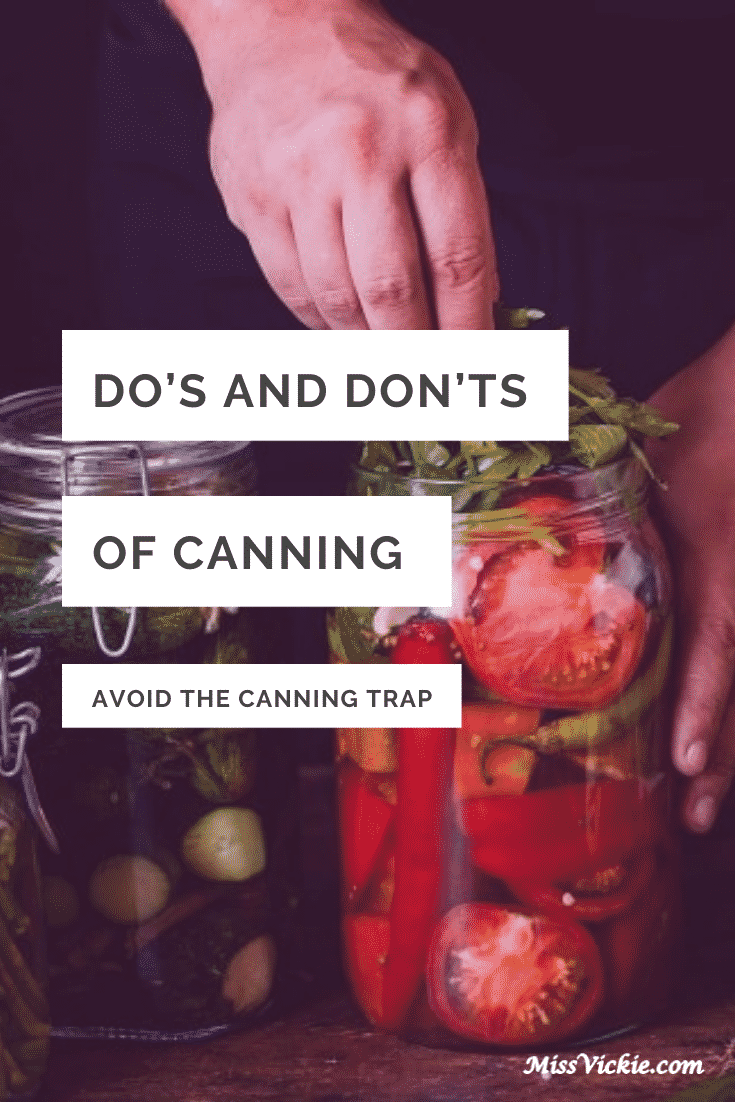
Home canning is both a science and art. For it to be done correctly and efficiently, there are a few basic rules that must be followed to the letter to not only ensure a quality outcome but a safe one as well. The risks of not following the rules are great; a contaminated can of preserved jelly can send you to hospital due to botulism. Although rare, botulism is a sneaky bacterium that can even cause death. The only way to kill botulism causing bacteria is through heat processing.
Do’s and Don’ts of Canning
The recipes to be used in the canning process must also have been tested and tried over time to guarantee their safety. Old family recipes should be replaced; after extensive tests into home preservation techniques and equipment, it is recommended that you avoid using recipes that are older than 1990. Other dos and don’ts of canning include:
Canning Do’s
Always get organized
Before you start canning, there are some basic organizational things that you must do. For instance, you must ensure that your canning equipment is safe and that all the components of your pressure canner are accurate and intact. Ensure that you have all the necessary canning tools laid out to make the process swift.
Follow the recipe to the tee
Always follow your recipe to the tee to avoid botulism and to ensure that foods are preserved properly. Do not add more ingredients than what is called for in the recipe and always heat food to the proper temperatures. Foods with low acidity must also be pressure canned while foods with high acidity water bath canned.
Use proper equipment and techniques
Always use the right size of jars. Equipment such as jar lifters can ensure you are safe throughout the canning process.
Always leave sufficient space
When filling up your jars of food, always leave sufficient headspace, which is the distance between the top of the jar and the food, to allow for expansion to take place.
Inspect the final product
When you are done, always inspect the final product to make sure that it has vacuum sealed. You can carry out a test by pushing down the top of the lid to see if it was achieved, your lids should pop within 24 hours of canning to signify that they have been sealed properly.
Canning Don’ts
- Avoid using old recipes that were created after 1990. Recipes are constantly being updated as the techniques and equipment used in modern food canning continue to evolve.
- Don’t use outdated techniques such as sealing jars using paraffin wax. The best techniques for sealing and canning are by using a pressure canner or boiling water bath.
- Do not consume gifted cans of preserves without asking how they were processed and which recipe was utilized. It is generally better to be safe than sorry.
- Do not reuse old lids for re-canning. Always replace your lids with every new canning cycle.
- So not move or cover jars before they are done cooling completely. Also, do not set cooling jars in front of an air conditioner or fan.
- Do not attempt to rush the cooling down process of the pressure canner. Allow the pressure canner to cool down naturally.
- Do not can dairy products such as milk or butter as they are too low acid and dense to be canned. Freezing works better for such products.